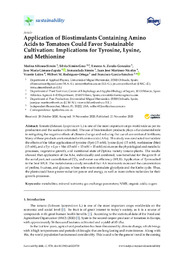Please use this identifier to cite or link to this item:
https://hdl.handle.net/11000/33490Full metadata record
| DC Field | Value | Language |
|---|---|---|
| dc.contributor.author | Cámara-Zapata, José-María | - |
| dc.contributor.author | Alfosea Simón, Marina | - |
| dc.contributor.author | Simon Grao, Silvia | - |
| dc.contributor.author | Zavala González, Ernesto | - |
| dc.contributor.author | Simón Vilella, Inmaculada | - |
| dc.contributor.author | Martinez Nicolas, Juan Jose | - |
| dc.contributor.author | Lidón Noguera, Vicente | - |
| dc.contributor.author | Rodríguez Ortega, Wilbert Michael | - |
| dc.contributor.author | García Sánchez, Francisco | - |
| dc.contributor.other | Departamentos de la UMH::Física Aplicada | es_ES |
| dc.date.accessioned | 2024-10-14T12:05:22Z | - |
| dc.date.available | 2024-10-14T12:05:22Z | - |
| dc.date.created | 2020-11 | - |
| dc.identifier.citation | Sustainability 2020, 12 | es_ES |
| dc.identifier.issn | 2071-1050 | - |
| dc.identifier.uri | https://hdl.handle.net/11000/33490 | - |
| dc.description.abstract | Tomato (Solanum lycopersicum L.) is one of the most important crops worldwide as per its production and the surface cultivated. The use of biostimulant products plays a fundamental role in mitigating the negative effects of climate change and reducing the use of conventional fertilizers. Many of these products are formulated with amino acids (AAs). This study was conducted to elucidate the effects of the foliar application of tyrosine (Tyr) (15 mM), lysine (Lys) (15 mM), methionine (Met) (15 mM), and a Tyr + Lys + Met (15 mM + 15 mM + 15 mM) mixture on the physiological and metabolic processes, vegetative growth, and nutritional state of Optima variety tomato plants. The results showed that application of the AAs, individually and combined, was beneficial for the growth of the aerial part, net assimilation of CO2, and water use efficiency (WUE). Application of Tyr resulted in the best WUE. The metabolomics study revealed that AA treatments increased the concentration of proline, fructose, and glucose, whose role was to stimulate glycolysis and the Krebs cycle. Thus, the plants could have greater reduction power and energy, as well as more carbon molecules for their growth processes. | es_ES |
| dc.format | application/pdf | es_ES |
| dc.format.extent | 19 | es_ES |
| dc.language.iso | eng | es_ES |
| dc.publisher | MDPI | es_ES |
| dc.rights | info:eu-repo/semantics/openAccess | es_ES |
| dc.rights | Attribution-NonCommercial-NoDerivatives 4.0 Internacional | * |
| dc.rights.uri | http://creativecommons.org/licenses/by-nc-nd/4.0/ | * |
| dc.subject | Metabolites | es_ES |
| dc.subject | Mineral nutrients | es_ES |
| dc.subject | Gas exchange parameters | es_ES |
| dc.subject | NMR | es_ES |
| dc.subject | Organic acids | es_ES |
| dc.subject | Sugars | es_ES |
| dc.title | Application of Biostimulants Containing Amino Acids to Tomatoes Could Favor Sustainable Cultivation: Implications for Tyrosine, Lysine, and Methionine | es_ES |
| dc.type | info:eu-repo/semantics/article | es_ES |
| dc.relation.publisherversion | https://doi.org/10.3390/su12229729 | es_ES |

View/Open:
sustainability-12-09729-v3.pdf
5,83 MB
Adobe PDF
Share:
.png)
